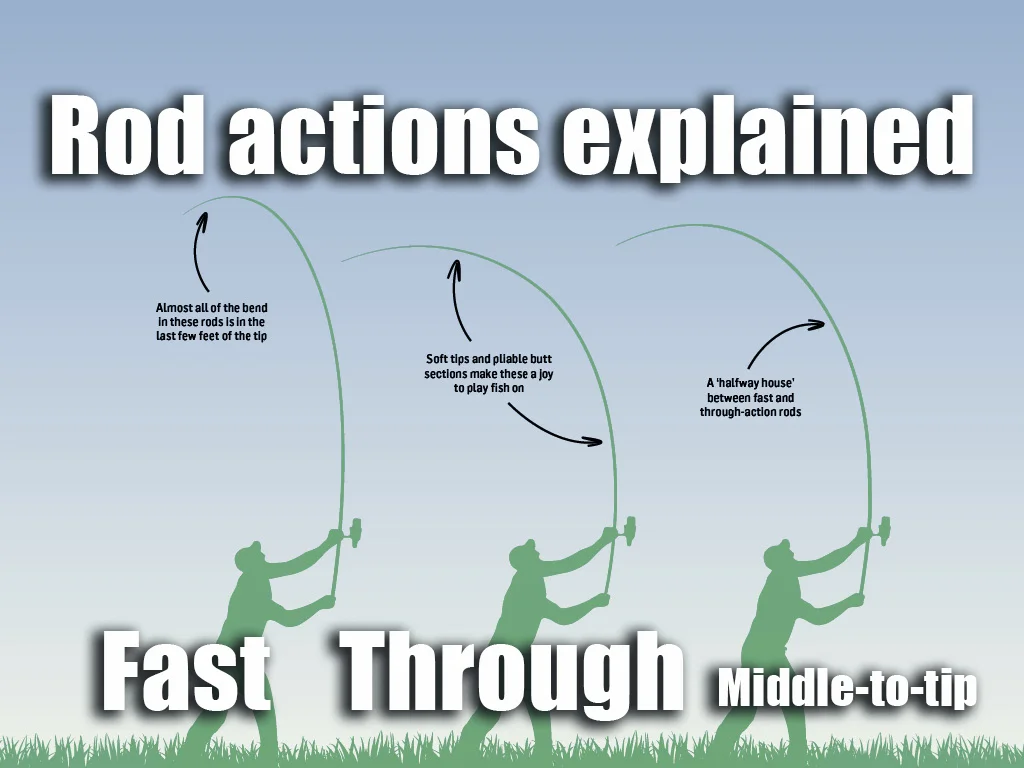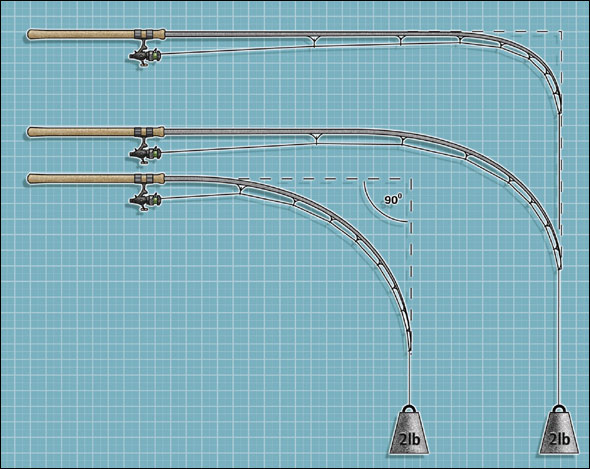When it comes to fishing, choosing the right equipment can make all the difference. One of the most important factors to consider is the test curve of your fishing rod. The test curve is a measurement of the amount of weight required to bend the rod at a 90-degree angle. This measurement is critical because it determines the strength and sensitivity of the rod, which can impact your ability to catch fish.
One question that often arises amongst anglers is whether a 3.5 lb test curve is too much. Some argue that this level of strength is unnecessary for most fishing scenarios, while others believe it is crucial for certain species or fishing styles. In this article, we will explore the pros and cons of a 3.5 lb test curve and provide insights to help you make an informed decision about your fishing gear.
Is 3.5 Lb Test Curve Too Much?
When it comes to fishing, choosing the right equipment is crucial to your success. One of the most important aspects of your gear is your fishing line. The test curve of your line determines how much weight it can handle before breaking. The question is, is 3.5 lb test curve too much? Let’s explore this topic in more detail.
Understanding Test Curve
First, let’s define what test curve means. Test curve is the amount of weight required to bend the tip of a rod a certain distance. It is measured in pounds and usually ranges from 1 lb to 12 lb or more. The higher the test curve, the stronger the rod and the thicker the line it can handle.
A 3.5 lb test curve is considered medium to heavy. It is suitable for catching larger fish such as bass, pike, and catfish. However, it may not be ideal for smaller fish and finesse techniques such as drop-shotting or finesse jigging. In these situations, a lighter line with a lower test curve would be more appropriate.
Benefits of 3.5 Lb Test Curve
Despite its limitations, a 3.5 lb test curve can be a versatile line for many types of fishing. It has several benefits, including:
- Strong enough to handle larger fish
- Less likely to break or snap under pressure
- Can handle heavier lures and baits
- Provides a good balance between sensitivity and strength
If you primarily fish for larger species, a 3.5 lb test curve may be the right choice for you.
3.5 Lb Test Curve vs. Other Test Curves
So, how does a 3.5 lb test curve compare to other test curves? Let’s take a look at some common test curves and their uses.
| Test Curve | Recommended Use |
|---|---|
| 1-2 lb | Ultra-light fishing for small species |
| 2-4 lb | Light fishing for small to medium-sized species |
| 4-6 lb | Medium fishing for medium-sized species |
| 6-8 lb | Heavy fishing for larger species |
| 8-12 lb | Extra-heavy fishing for very large species |
As you can see, a 3.5 lb test curve falls in the medium to heavy range and is suitable for catching medium to large-sized fish.
Conclusion
In conclusion, whether or not a 3.5 lb test curve is too much depends on your fishing style and the species you are targeting. It is a versatile line that can handle larger fish and heavier lures, but may not be ideal for finesse techniques or smaller species. Consider your fishing needs and choose the test curve that best fits your situation. Happy fishing!
Frequently Asked Questions
When it comes to choosing the right fishing gear, anglers often wonder if a 3.5 lb test curve is too much. Here are some commonly asked questions and answers to help you decide.
1. What does “test curve” mean in fishing gear?
The test curve is the amount of weight required to bend a fishing rod at a 90-degree angle. It is measured in pounds and is an indication of the rod’s strength and power. A higher test curve means a stronger and more powerful rod that can handle heavier fish and stronger currents.
So, whether a 3.5 lb test curve is too much depends on the type of fishing you plan to do. If you are targeting large and powerful fish in strong currents, then a higher test curve may be necessary. However, if you are fishing in calm waters and targeting smaller fish, a lower test curve may be sufficient.
2. What are the advantages of a higher test curve?
A higher test curve can provide several advantages for anglers. It allows them to cast longer distances and handle heavier lures and baits. It also provides more power and control when fighting bigger fish, reducing the risk of the rod snapping or breaking. Additionally, a higher test curve can help anglers to detect bites and set hooks more effectively.
However, a higher test curve also means a heavier and bulkier rod, which can be tiring to use for extended periods. It may also be more expensive and not necessary for all types of fishing.
3. Can a 3.5 lb test curve be too much for beginners?
For beginners, a 3.5 lb test curve may be too much, especially if they are not used to handling heavier and more powerful rods. It can be more difficult to cast and control, leading to frustration and potentially even injury. Beginners may benefit from starting with a lower test curve and gradually increasing as they gain more experience and confidence.
However, if a beginner is targeting large and powerful fish in strong currents, a higher test curve may be necessary to ensure they can handle the fish and avoid getting pulled into the water.
4. What other factors should be considered when choosing a fishing rod?
Aside from the test curve, there are several other factors to consider when choosing a fishing rod. These include the length, action, and material of the rod. The length will determine the casting distance and the action will affect the sensitivity and responsiveness of the rod. The material will affect the weight, strength, and durability of the rod. It is important to choose a rod that is appropriate for the type of fishing you plan to do and your level of experience.
Other factors to consider include the type of reel, line, and bait or lure that will be used. These should all be compatible with the rod and chosen based on the type of fish and fishing conditions.
5. How can I determine the right test curve for my fishing needs?
The right test curve will depend on several factors, including the type of fish you plan to catch, the fishing conditions, and your level of experience. It is best to consult with a knowledgeable fishing gear retailer or experienced angler for advice on choosing the right test curve. They can provide recommendations based on your specific needs and help you find a rod that is comfortable and effective to use.
It may also be helpful to try out different rods and test curves before making a purchase to see which feels most comfortable and effective for your fishing needs.
Test Curves on carp rods
After analyzing the factors that affect the choice of the test curve, it is safe to say that there is no one-size-fits-all answer to the question of whether 3.5 lb test curve is too much. It all depends on the type of fish you are targeting, the water conditions, and your personal preferences. However, it is crucial to keep in mind that the test curve is not the only factor that determines the performance of your fishing rod. Other factors such as the length, action, and material also play a significant role. Therefore, it is essential to choose a rod that is balanced in all aspects to achieve the best results.
In conclusion, while the test curve is an important factor to consider when purchasing a fishing rod, it is not the only factor that determines the rod’s performance. It is essential to consider all the elements of the rod, including its length, action, and material, to ensure it is suitable for the type of fishing you will be doing. Ultimately, the best test curve is one that allows you to cast comfortably and accurately and has the power to handle the fish you are targeting without being too heavy or too light. As a professional writer, I recommend that you do your research and choose your fishing rod wisely to maximize your chances of a successful catch.


